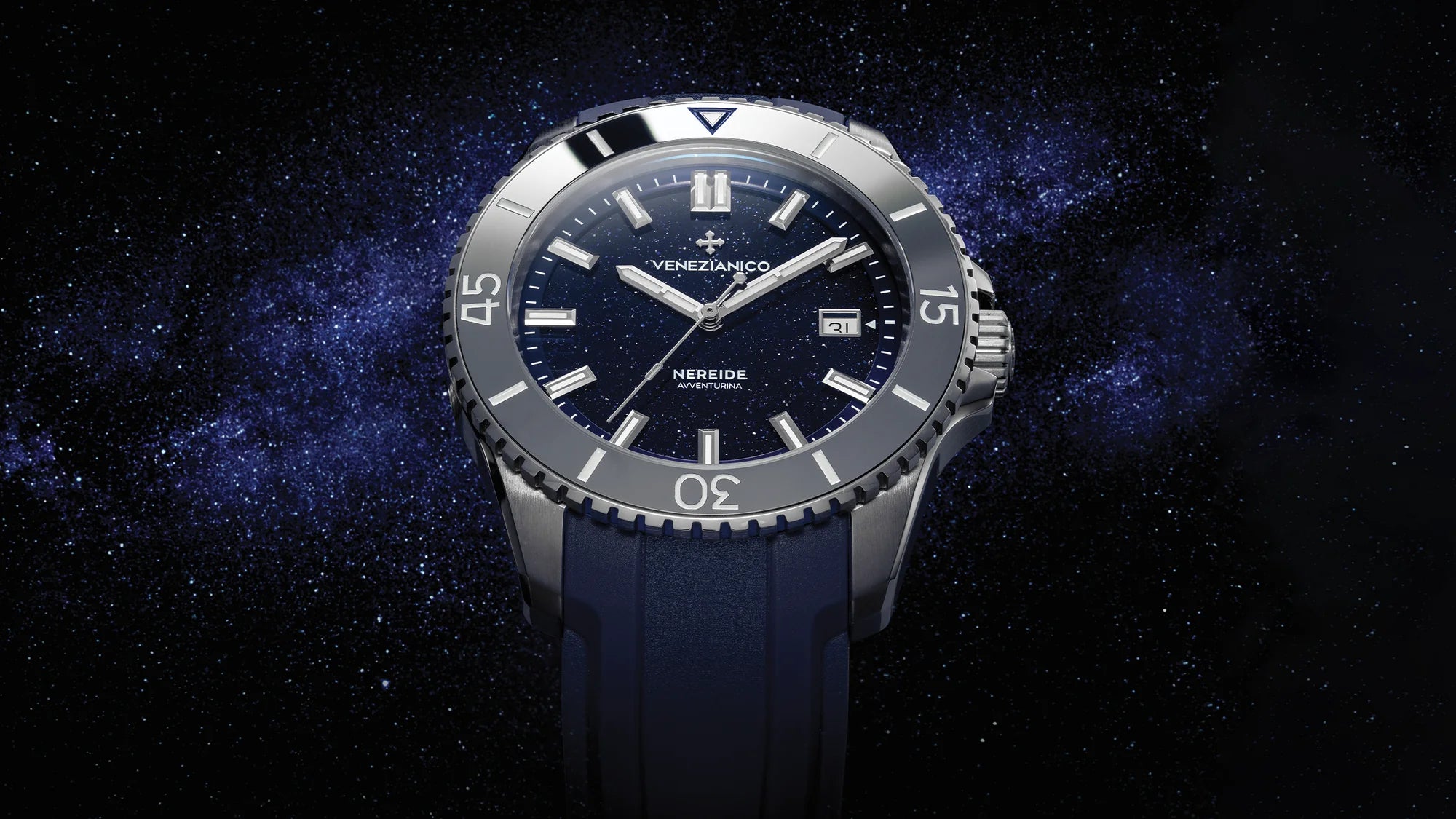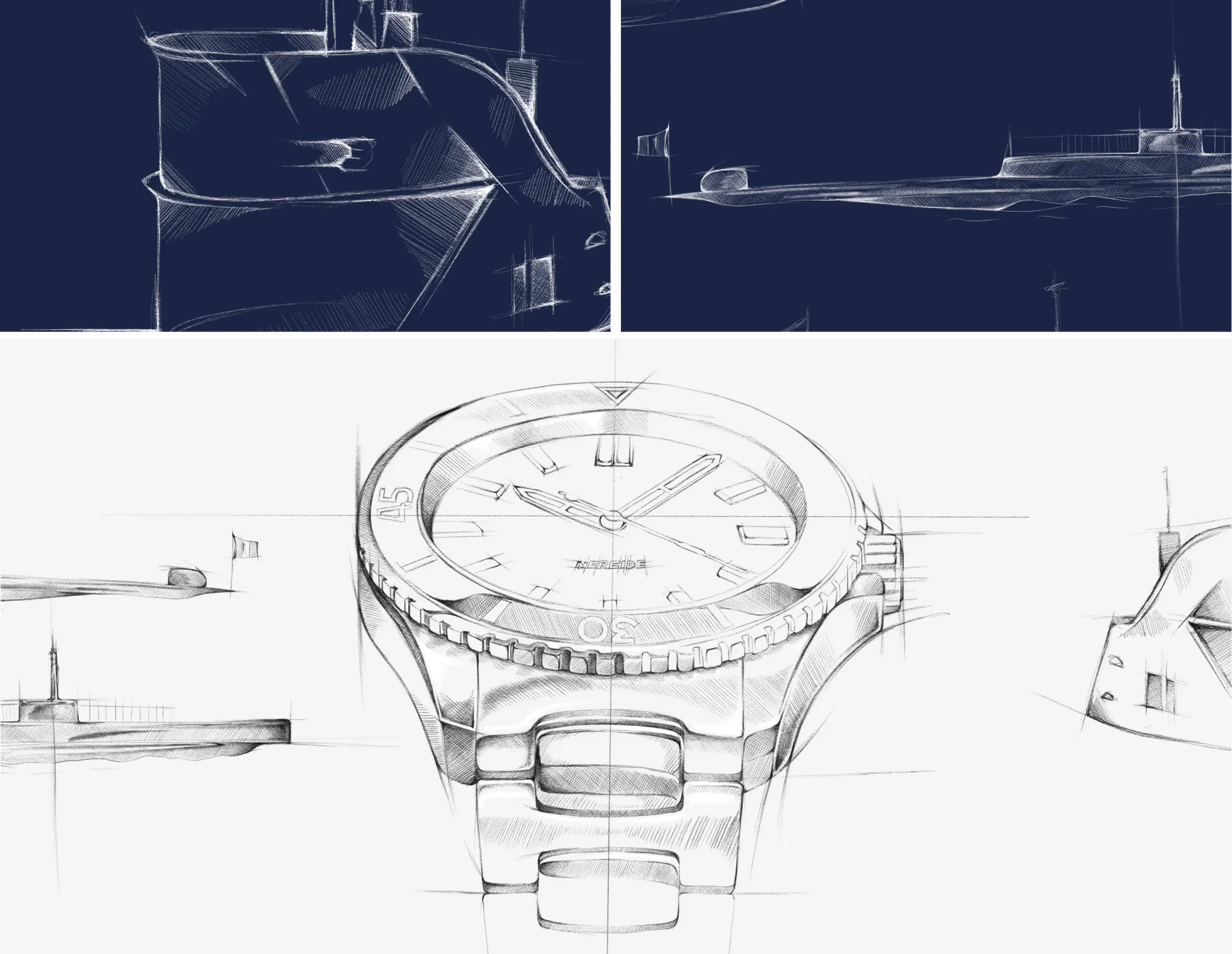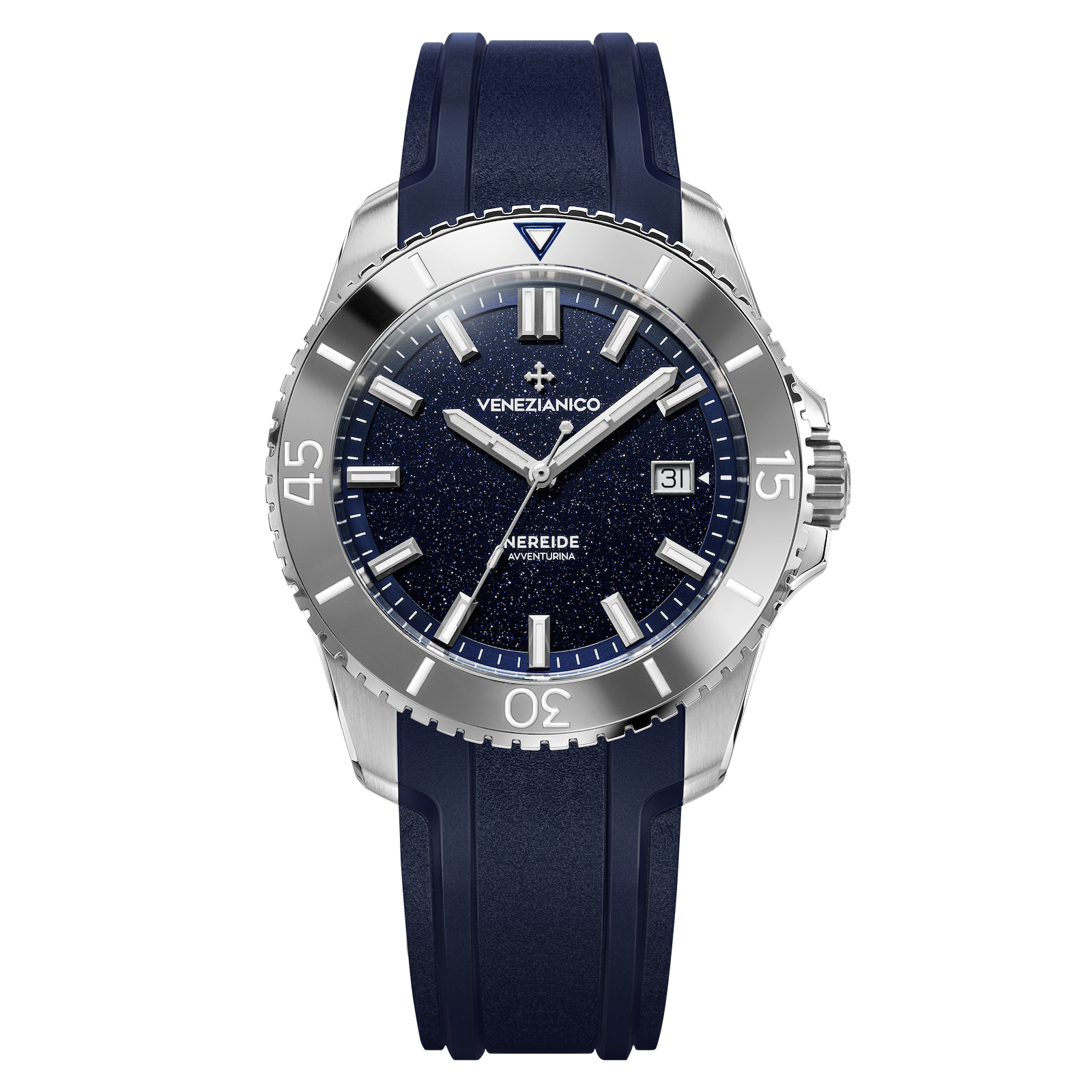
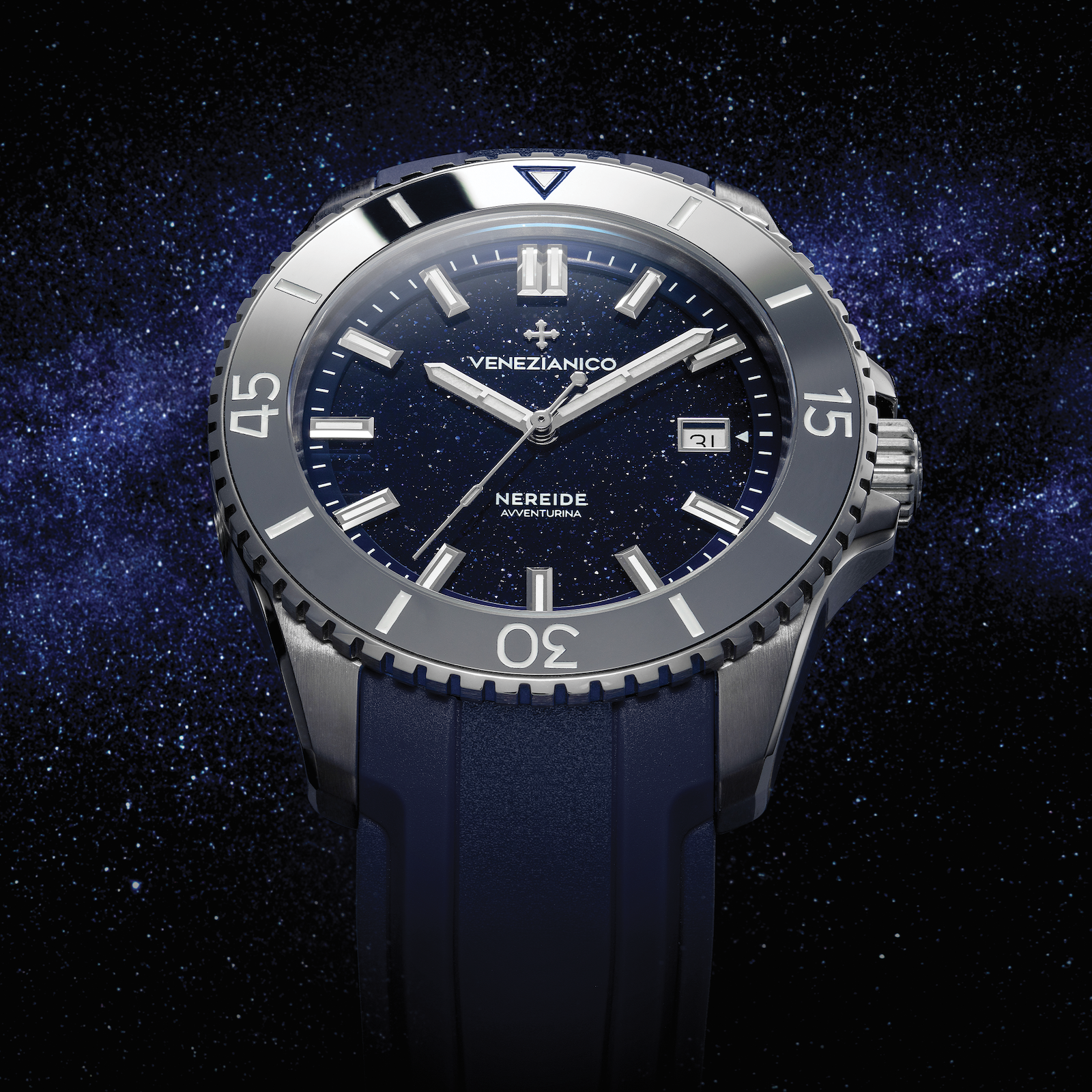
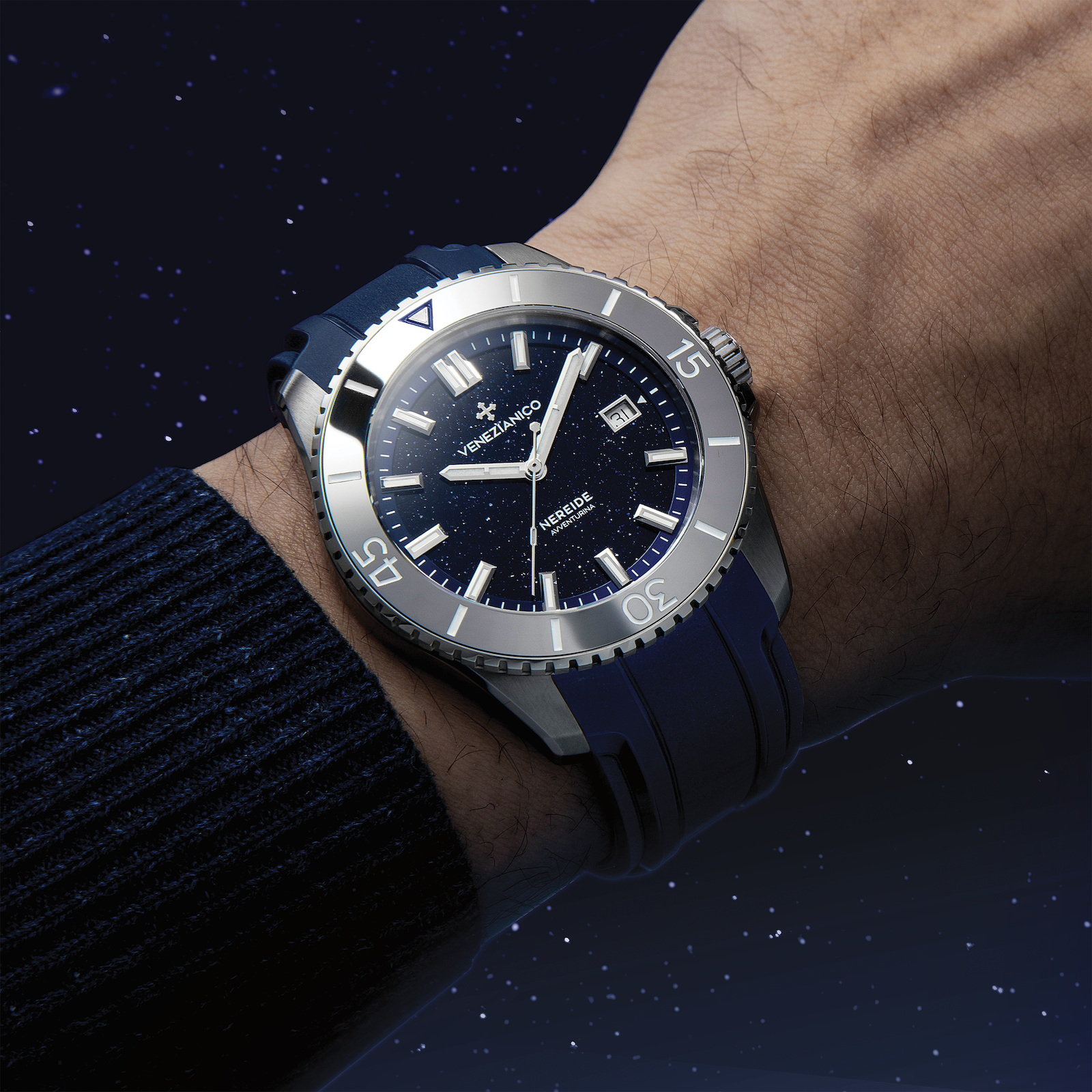
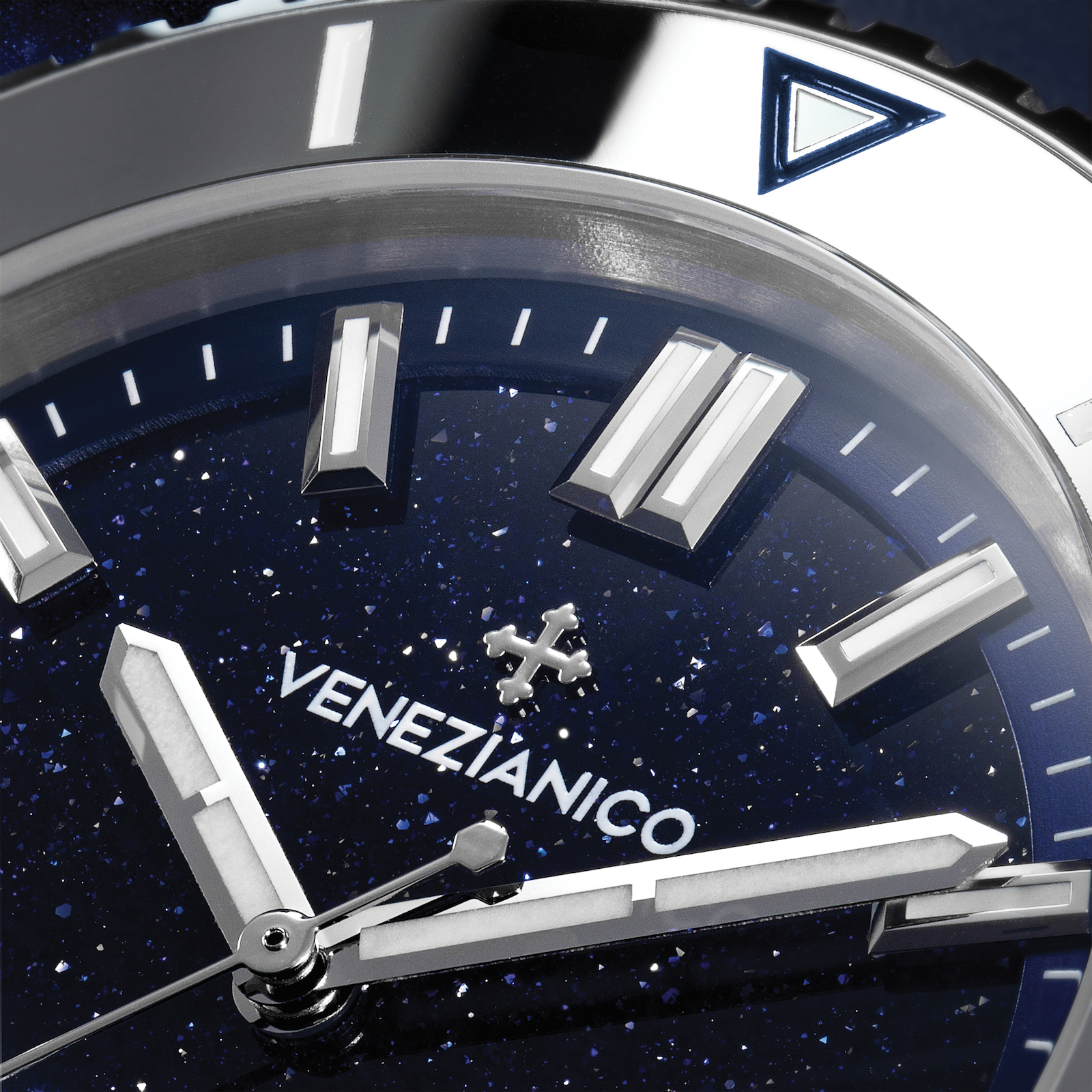
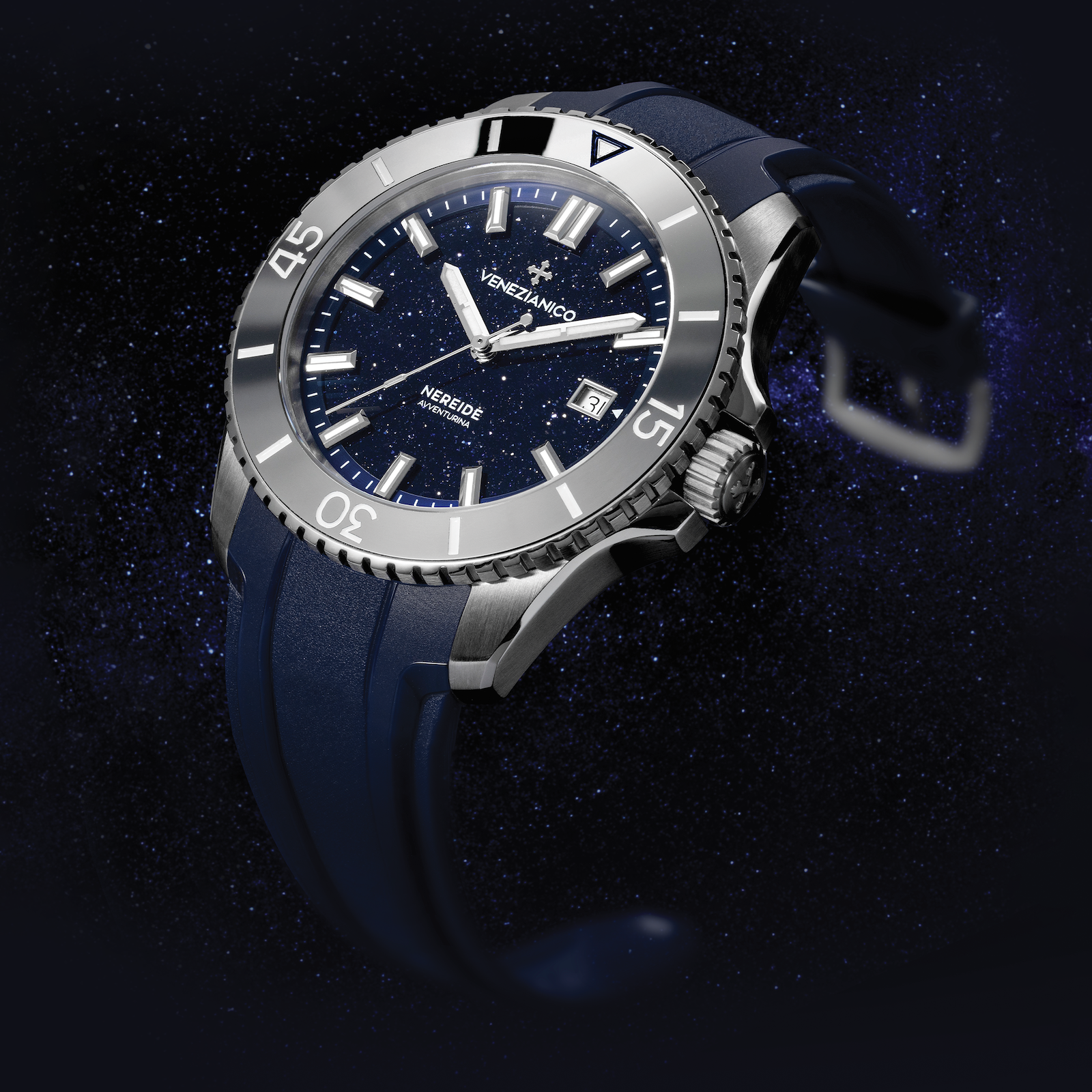
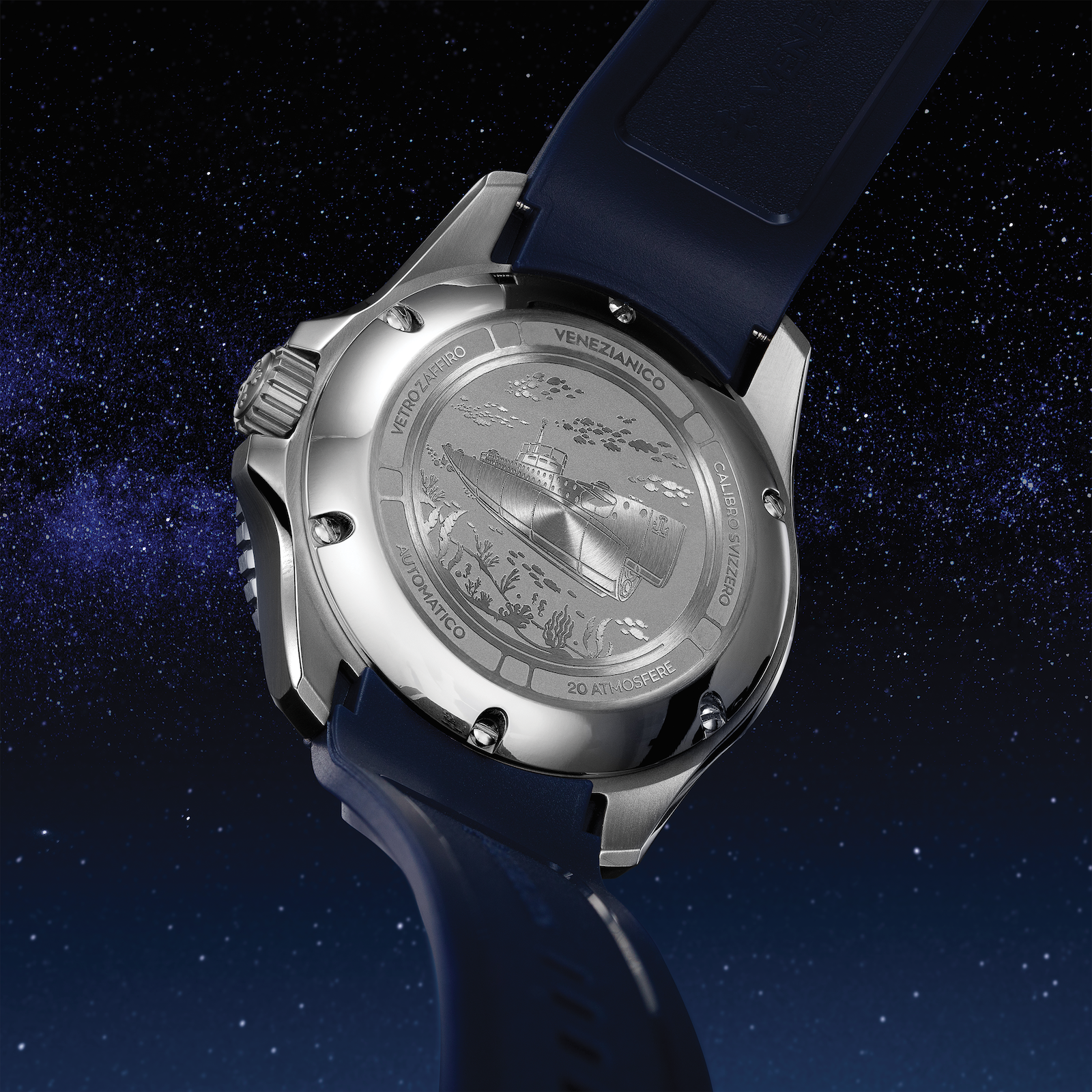
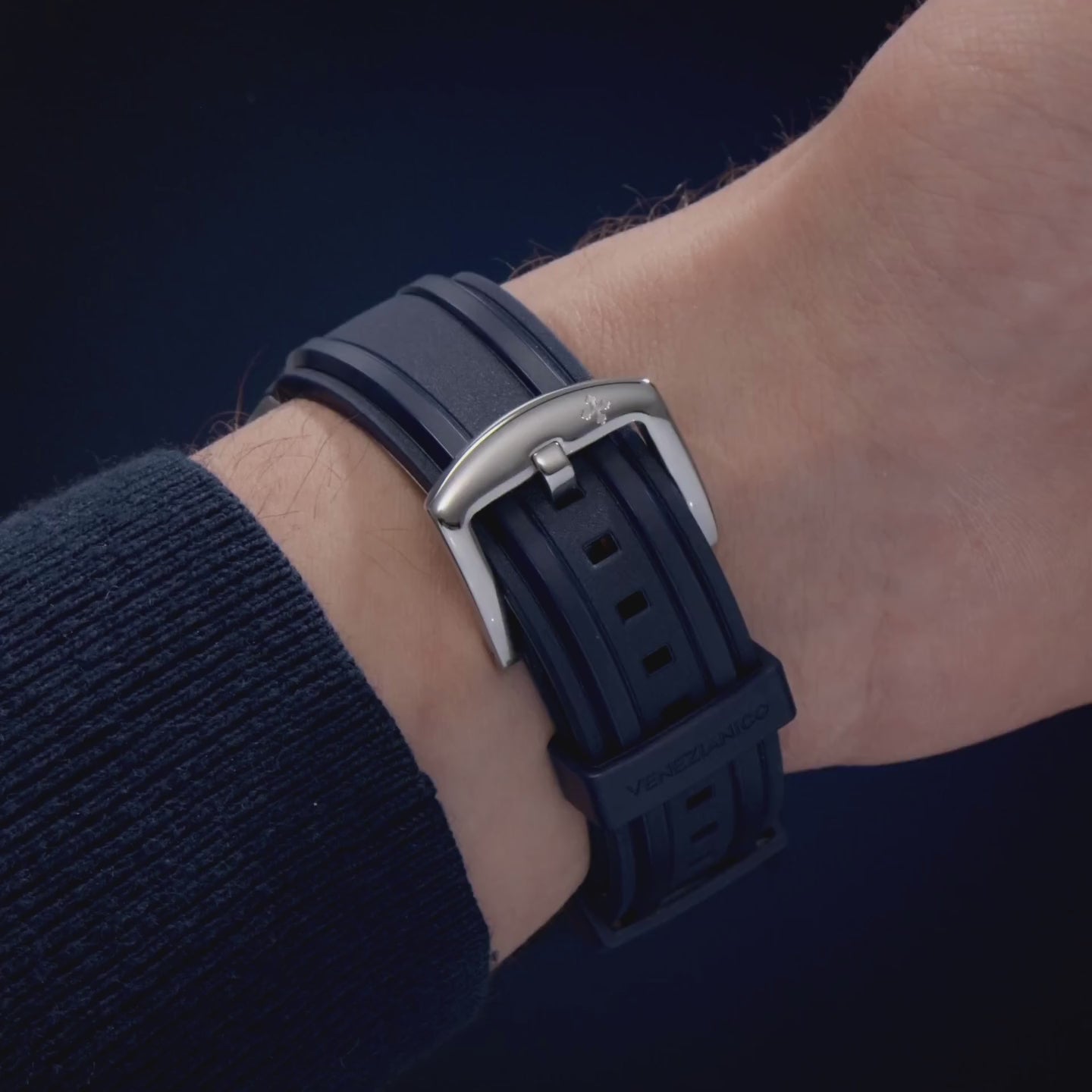
Nereide Avventurina 42 - 4521550
This Nereide takes its name from the aventurine glass, a particular glass processing technique invented in Venice in the 17th century and characterized by needle-like metal micro-inclusions, which produce a multitude of glittering reflections, reminiscent of the stars in the night sky.
CASE MATERIAL: 316L Stainless Steel
DIAL: Aventurine Glass
DIMENSIONS: Ø42mm, lug to lug 49mm
MOVEMENT: Automatic Cal. Sellita SW200-1 Swiss Made
CRYSTAL: Sapphire Glass with anti-reflective coating
LUMINOUS MATERIAL: BGW9 Super-LumiNova®
BEZEL: Tungsten insert, 120 clicks
WR: 20ATM (= 200mt)
STRAP: Rubber band, Made in Italy
All orders include free shipping. Here are the average delivery times:
- EU Countries: 1-2 business days
- United Kingdom: 2-3 business days
- USA: 2-3 business days
- Other Countries: 2-5 business days
If the watch does not meet expectations, it can be returned within 14 days for a full refund of the purchase amount. For more info, check out our Terms and Conditions.

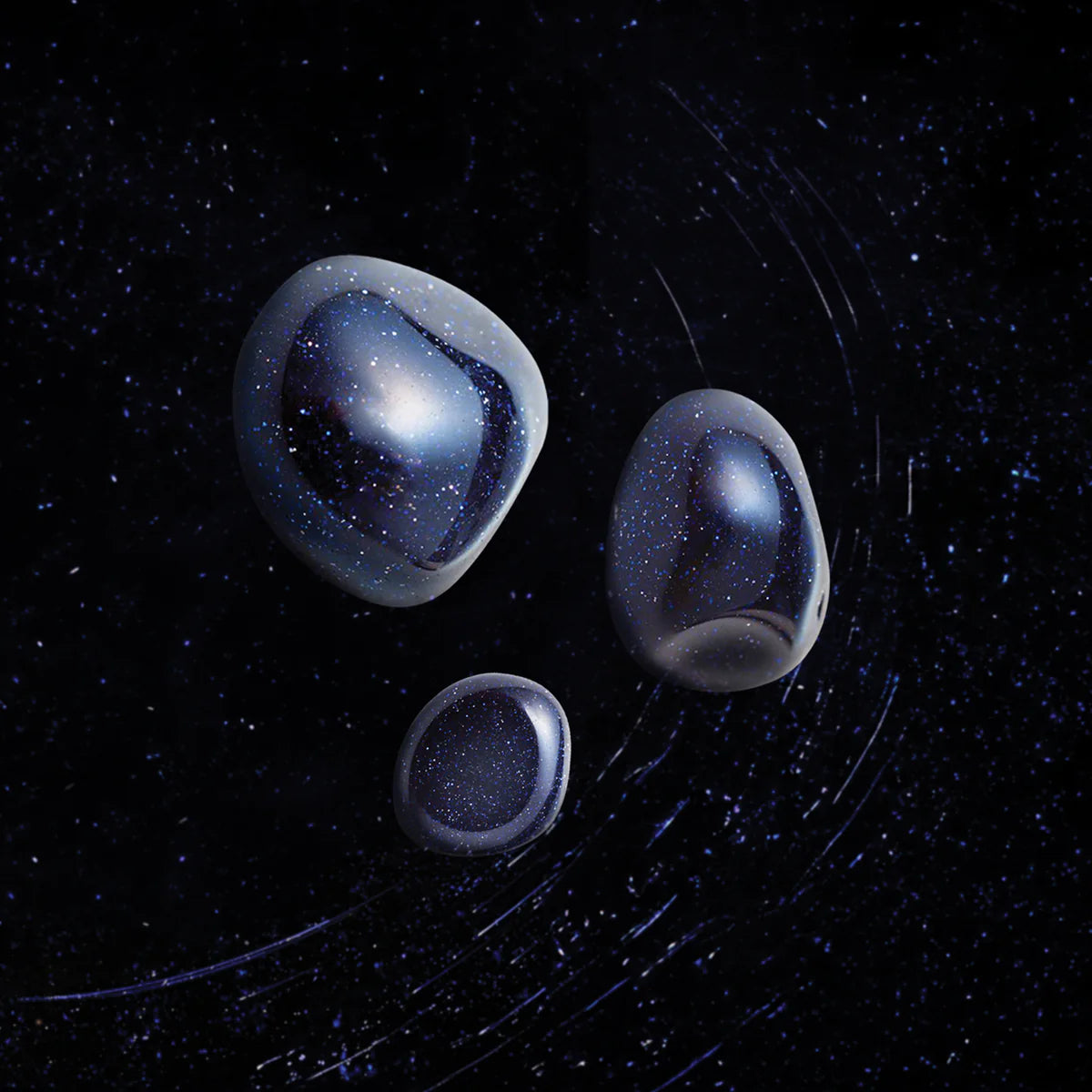
Aventurine is a precious glass of blue color, enriched with copper inclusions that give it a distinctive sparkling effect. Its origins date back to the early 17th century, attributed to Venetian glassmakers. Currently, this material is mainly used in the creation of art objects and is appreciated for its ability to reflect light in a unique way.
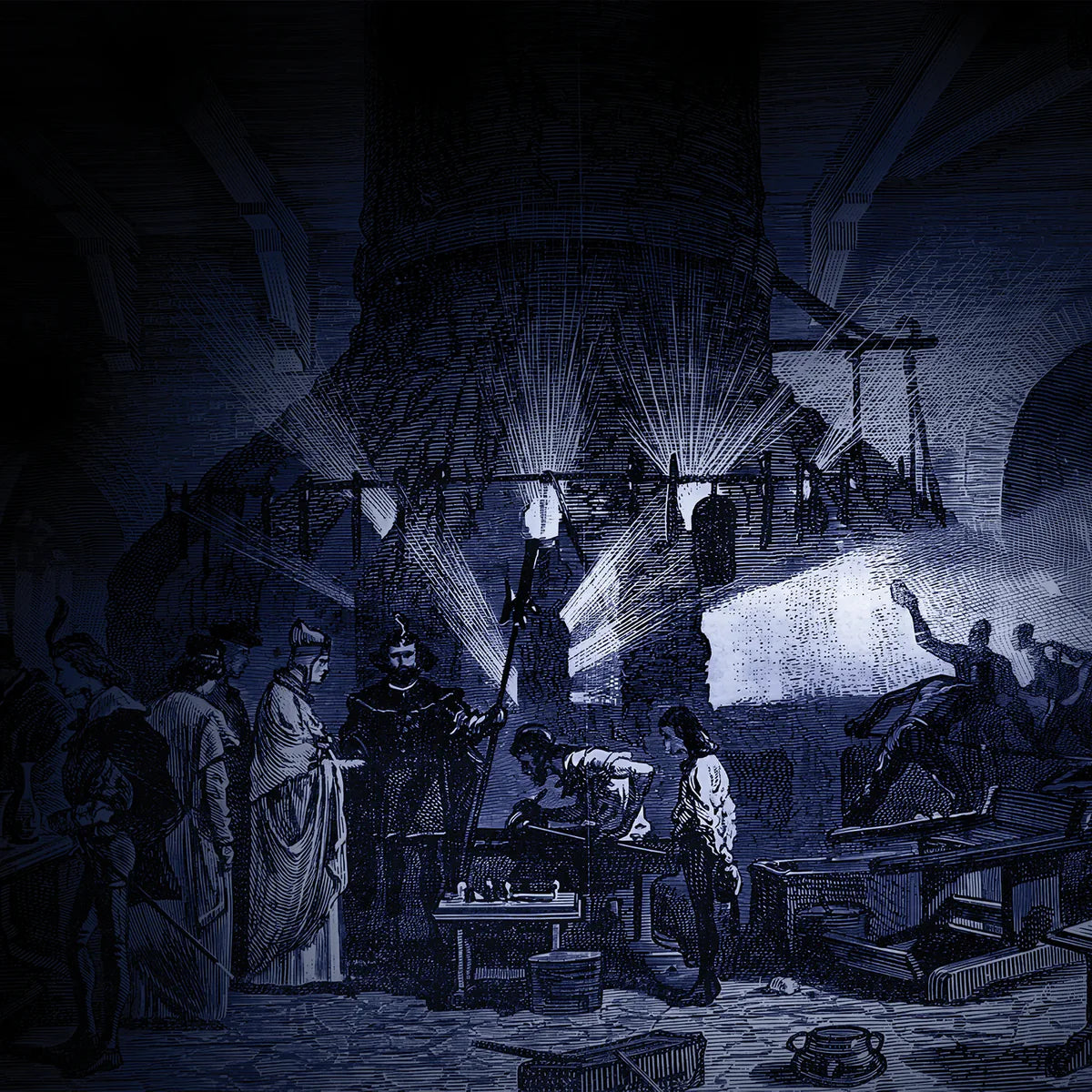
In the 17th century, the name "aventurine" originated from "avventura," meaning an uncertain and risky operation. Venetian glassmakers first produced aventurine by accident, spilling copper fragments into blue glass paste. By 1644, the technique was codified, and Venetian aventurine artifacts became highly prized. The lithograph depicts the Doge visiting workshops on Murano, the center of glass production.
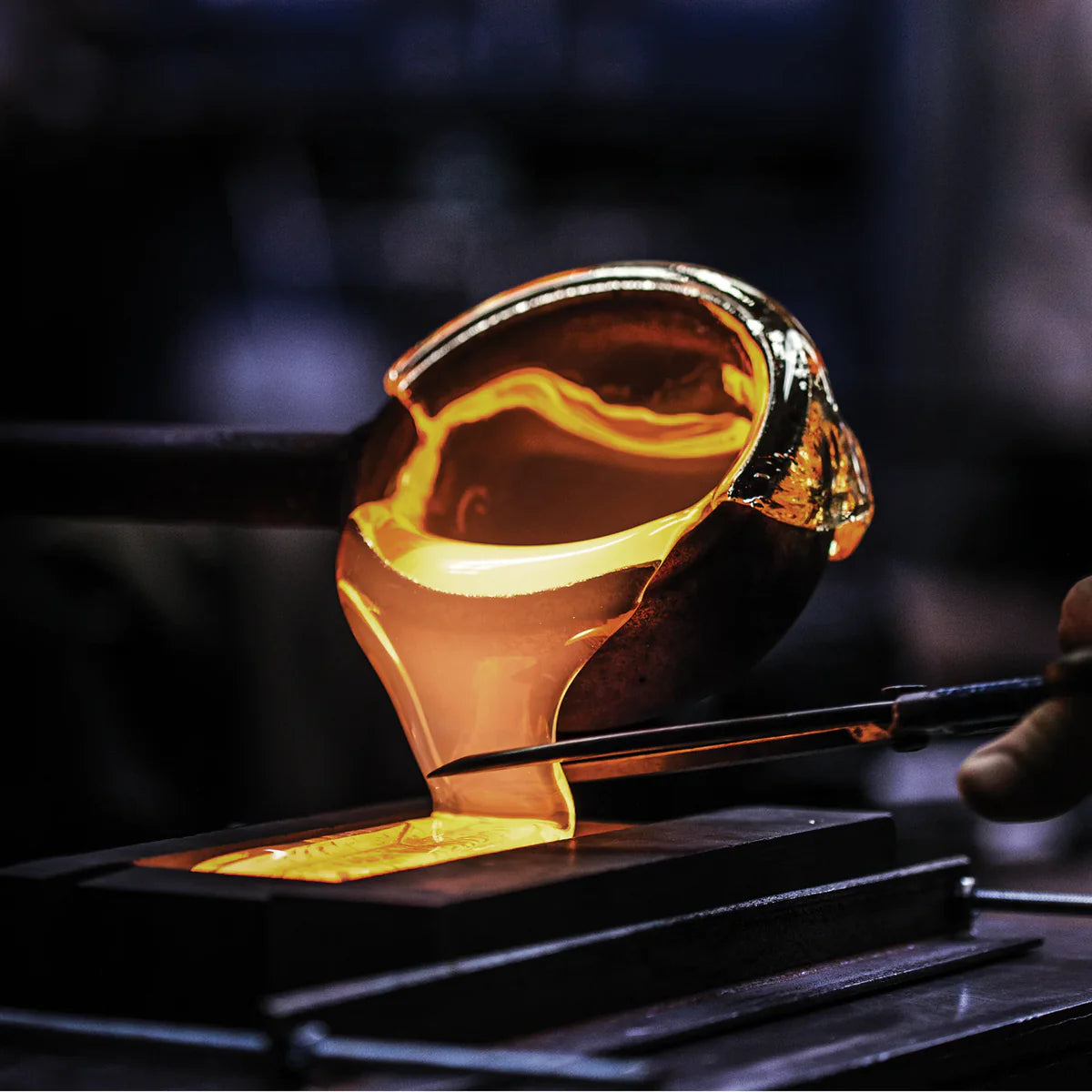
Aventurine is a challenging material to tame, precisely because of the copper fragments inserted into the molten glass, which arrange themselves uniformly during the slow cooling process. To create components with a high degree of precision, aventurine is cold-cut, as if it were a hard stone. Today, the production of this material is still very limited precisely because of its complexity and the significant know-how required.
Aventurine is a precious glass of blue color, enriched with copper inclusions that give it a distinctive sparkling effect. Its origins date back to the early 17th century, attributed to Venetian glassmakers. Currently, this material is mainly used in the creation of art objects and is appreciated for its ability to reflect light in a unique way.
In the 17th century, the name "aventurine" originated from "avventura," meaning an uncertain and risky operation. Venetian glassmakers first produced aventurine by accident, spilling copper fragments into blue glass paste. By 1644, the technique was codified, and Venetian aventurine artifacts became highly prized. The lithograph depicts the Doge visiting workshops on Murano, the center of glass production.
Aventurine is a challenging material to tame, precisely because of the copper fragments inserted into the molten glass, which arrange themselves uniformly during the slow cooling process. To create components with a high degree of precision, aventurine is cold-cut, as if it were a hard stone. Today, the production of this material is still very limited precisely because of its complexity and the significant know-how required.



Technical details
Our dive watch, water-resistant to a depth of 200 meters, takes its name from the Nereide submarine, a marvel of Venetian naval technology. This timepiece is engineered to endure strong stresses, making it particularly well-suited for water sports enthusiasts.
Ø42 mm, lug-to-lug 49 mm, thickness 12.5 mm
Swiss Made Sellita SW200-1 Automatic, 3 Hands with Date Function
316L Stainless Steel
Tungsten, Polished and Scratch-Resistant with a Hardness of 9/10 on the Mohs Scale
Aventurine Glass, Precision-Cut 0.4mm Layer on brass base
Sapphire with anti-reflective coating
Swiss-Made BGW9 Super-LumiNova®
20 Atmospheres (200m/656ft)
Screw-Down
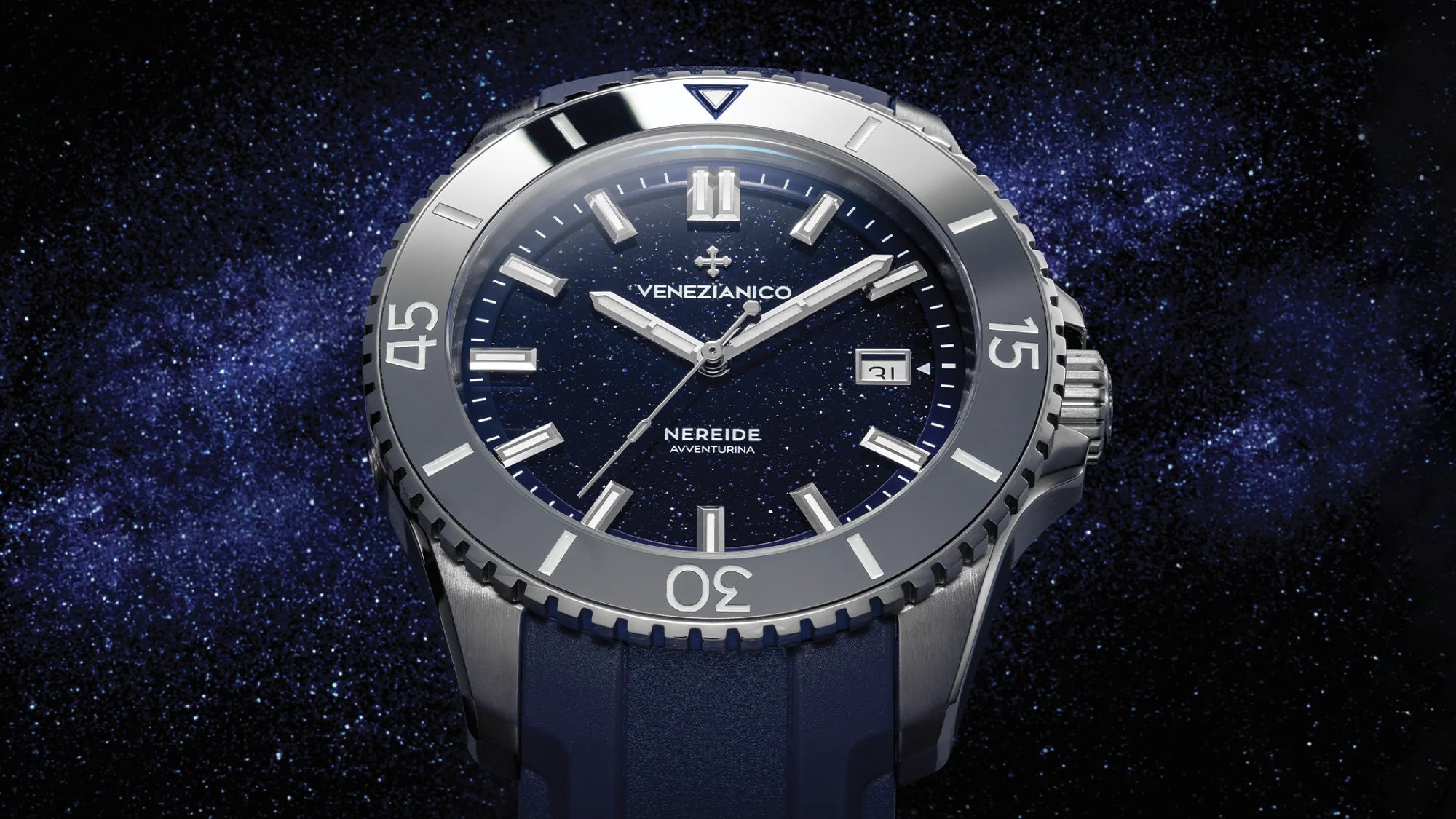
Tungsten Bezel Insert
Tungsten is the hardest and most resistant metal known to mankind.
It has a melting point of 3400°C, which makes it the most heat resistant metal. Its resistance to wear is equally incredible. Tungsten is, in practice, scratchproof and therefore it maintains its physical and aesthetic features unchanged over the years.
Aventurine Dial
A constellation of tiny fragments of light stands out against the deep blue of aventurine, evoking the dense mystery of the stars and the darkness of the universe. The rehaut completes the design of the dial and features a sunray texture that provides further complexity to the whole.
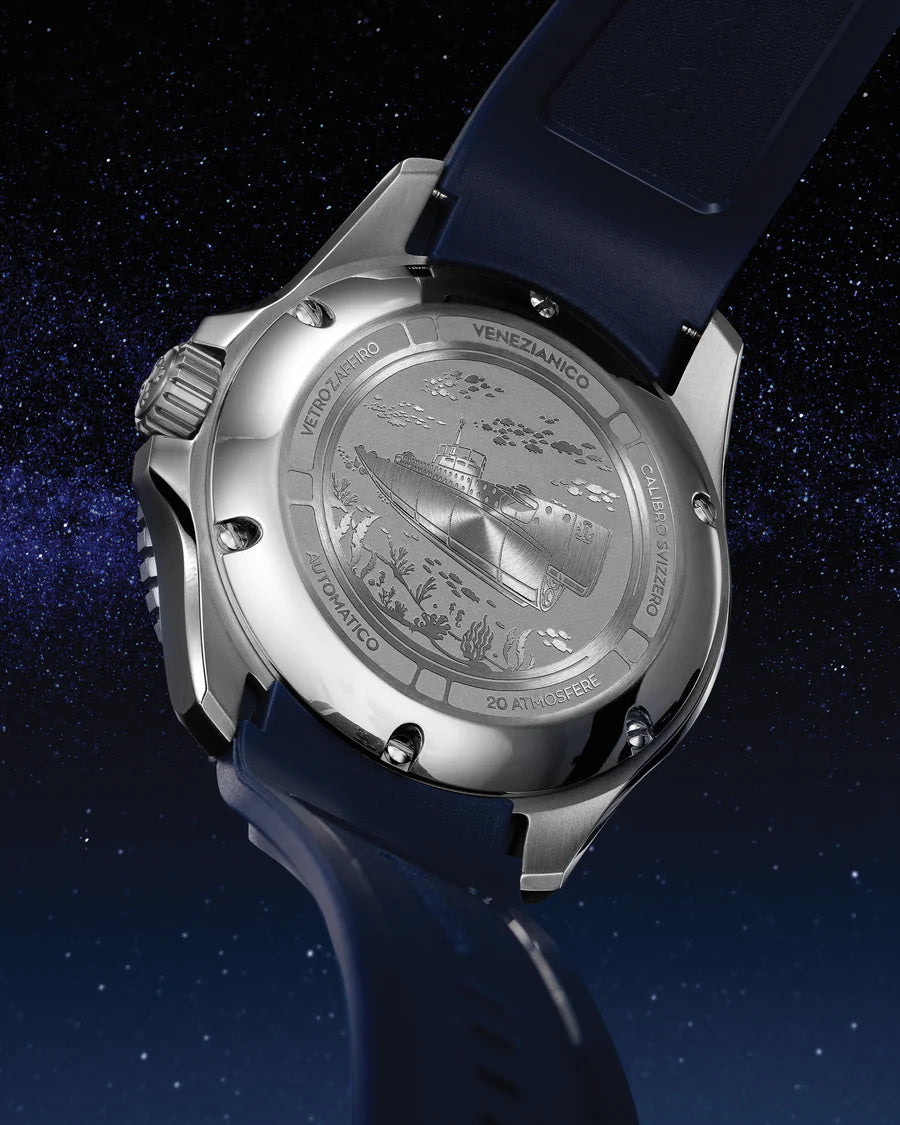
The submarine Nereide, which inspires the entire collection, is depicted submerged in the engraving at the center of the caseback, to remind how this watch doesn't compromise on underwater performance, retaining the ability to dive up to 200m deep and the rotating bezel that allows monitoring of dive times.
A Versatile Diver
Nereide Avventurina makes a strong point of its versatility. In addition to the aventurine dial being undoubtedly eye-catching, the extreme resistance granted by tungsten and sapphire crystal makes this timepiece perfect for everyday use too.
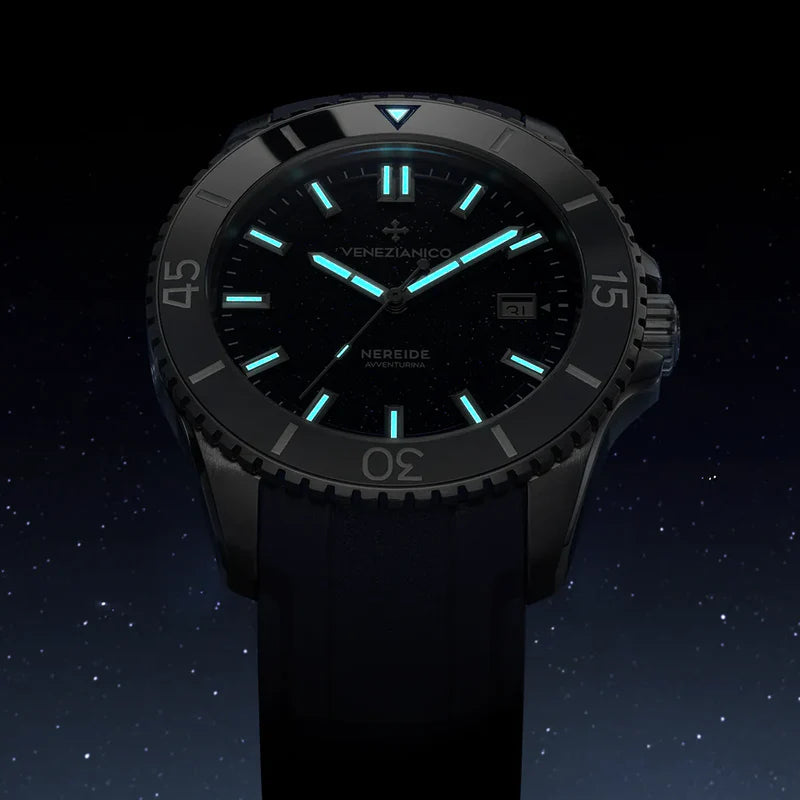
Swiss Super-LumiNova® BGW9
Swiss Super-LumiNova® BGW9 is a luminescent pigment which is sensitive to sunlight or artificial light. It is white in daylight and, once it is charged, it emits a bright blue-green glow in low light conditions, making it the solution of choice in watchmaking.



